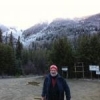I am no expert on BF research, but am trying to figure out how folks are conducting research (or what methods or strategies they are using).
To brainstorm out of box ideas, I needed to first understand what is in the box.
To pursue BF research, folks need to answer at least 5 key questions: where to go, when to go, who will go, what to do and how to do it?
I will not address the where, when, and who.
The what to do and how to do it is what interest me (hopefully people know where the hot spots are and whether it is better to research at night or day).
The table below is a matrix of methods (not comprehensively exhaustive) that I have discerned from reading and from 3 BFRO expeditions that I have attended.
The matrix is broken down into two parameters: the frequency of visits to the hot-spot by the researcher and the type of methods/practices used.
On the BFRO methods, I can only speak from my limited experience with two different approaches used. While both used wood knocks and vocalizations, one leader did not want NV or Thermal Imagers used and wanted to instead pursue the less aggressive route of being quite or playing music.
What Habituators and Local researchers do was my first pass guesstimate based on what I have read. I am sure there is a diverse crowd out there with many different approaches.
But is any of these approaches fruitful and yielding evidence?
I have not seen any proper analytical study of what approaches work best. I suspect that BFRO has a huge database from all their expeditions that they could analyze and extract how fruitful it was to wood knock and howl and what worked best.
NAWAC just published their monograph, but they did not analyze what conditions or methods were more likely to yield a sighting and they gave up on game cameras. Was it random?
I think random visits to hot spots is not very fruitful. I think being present all the time (like NAWAC does during the summers) is the better approach.
Granted, for local researchers who need to work for a living that is not a feasible alternative. So frequent and repetitive visits to the local hot spot is the next best option.


